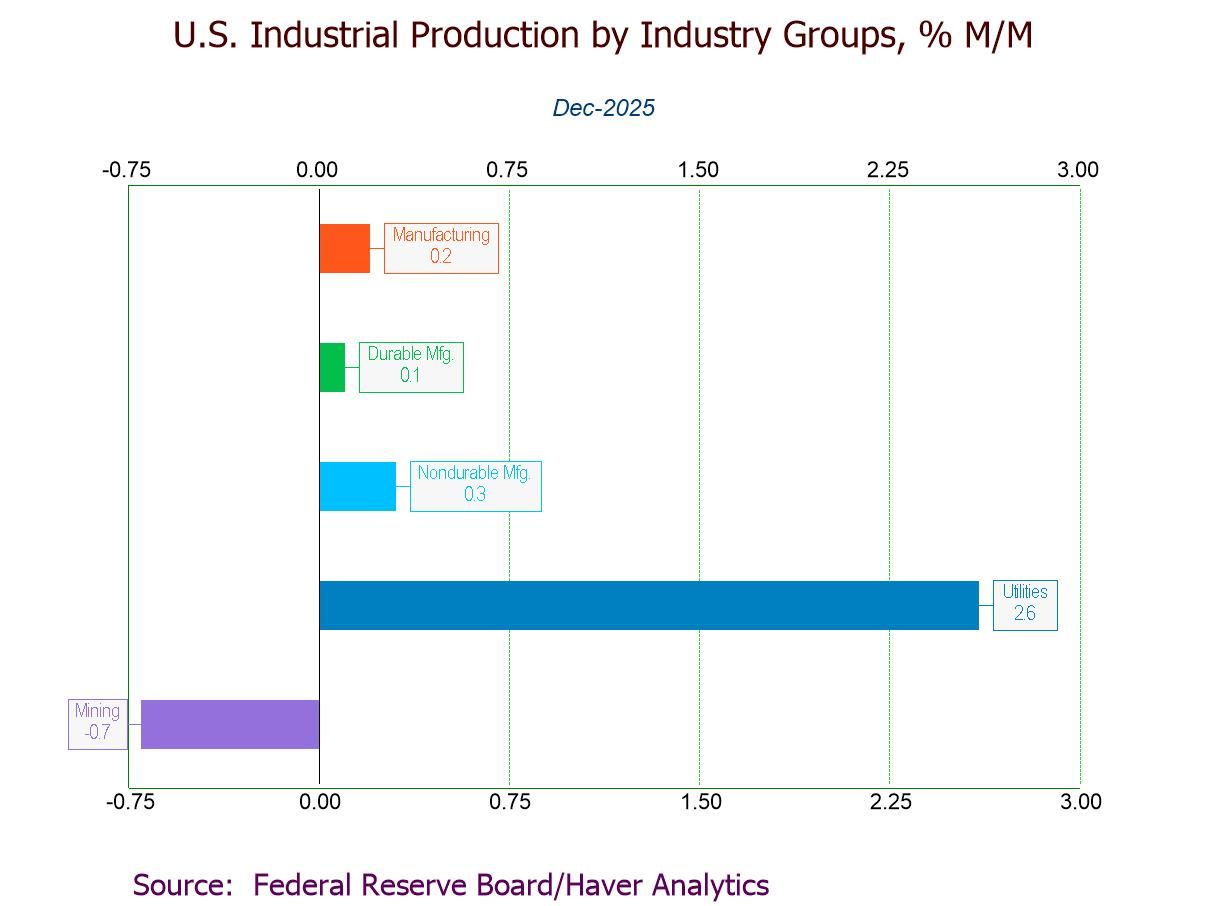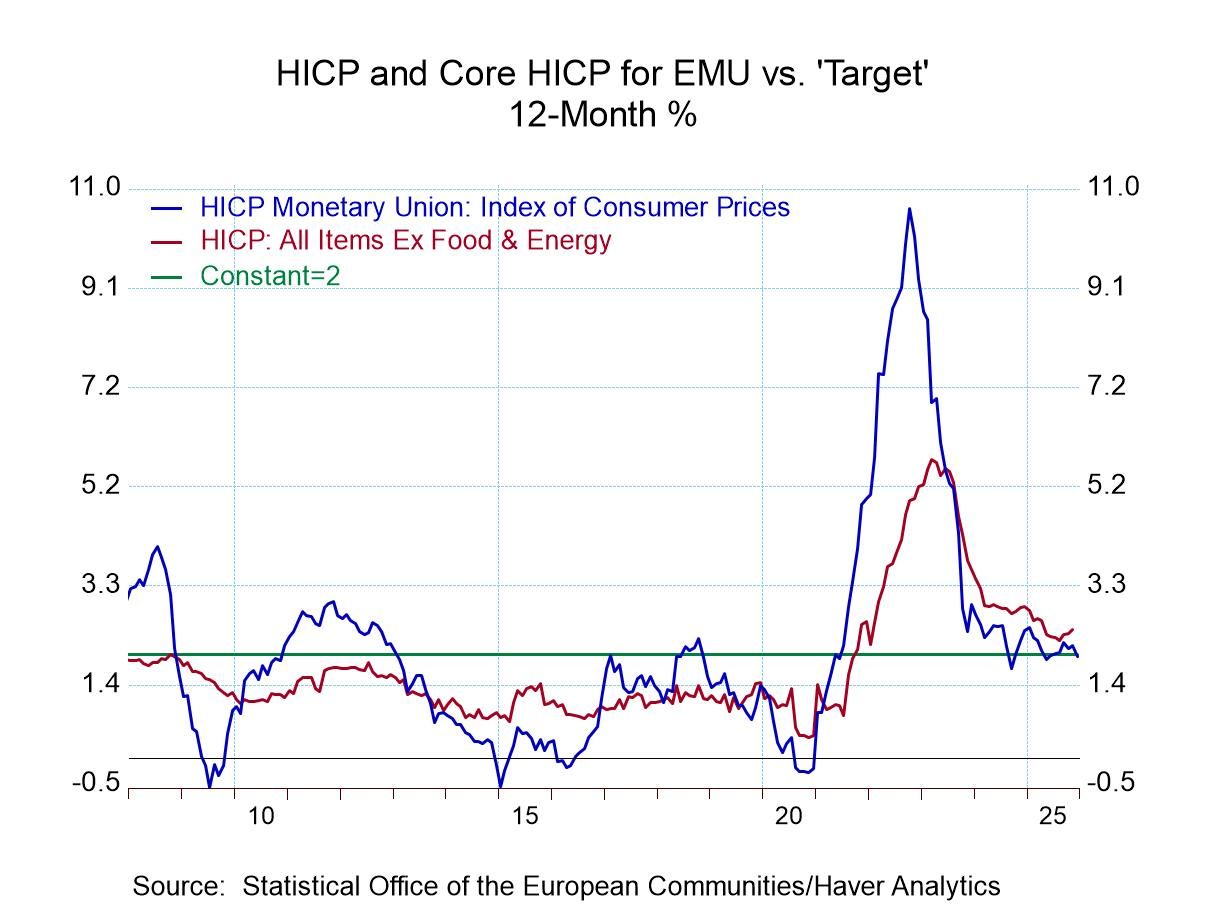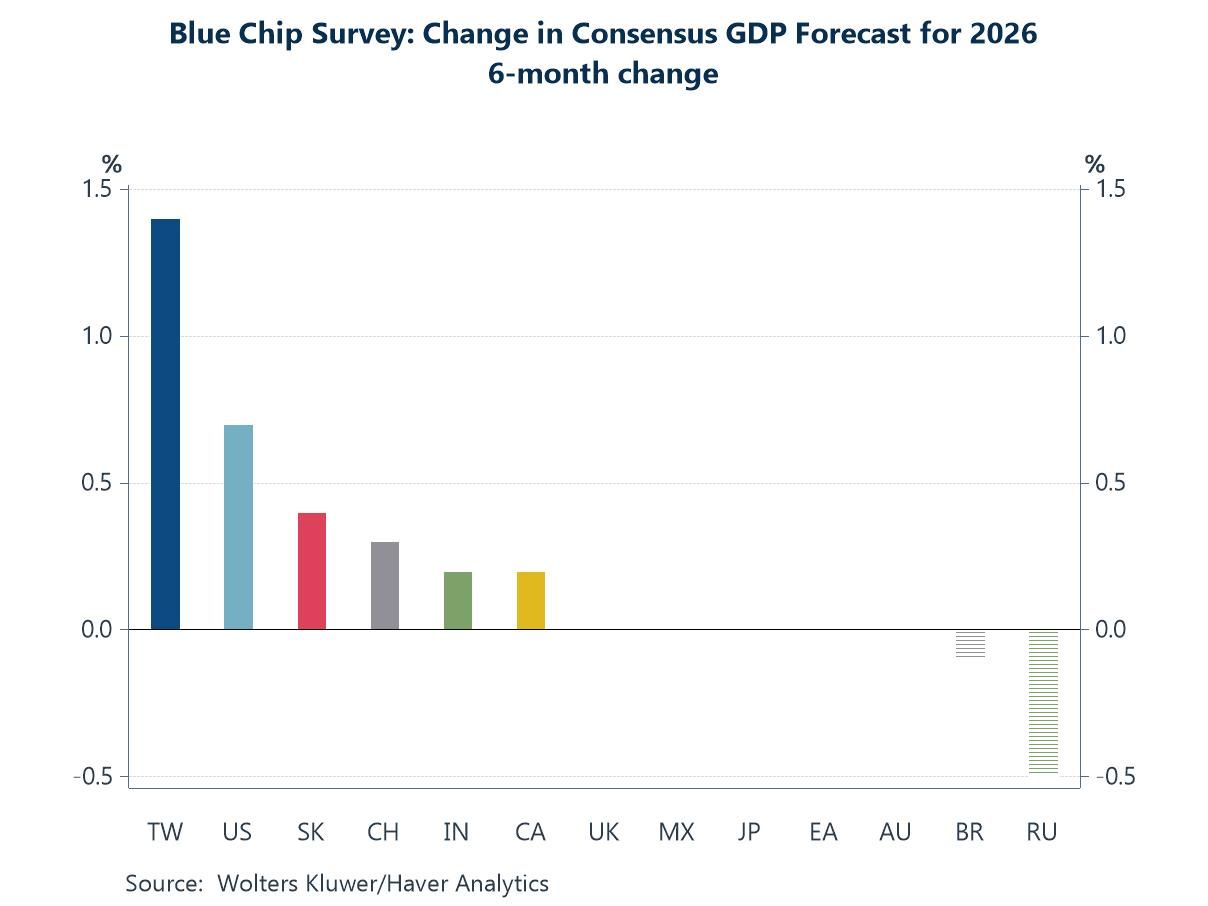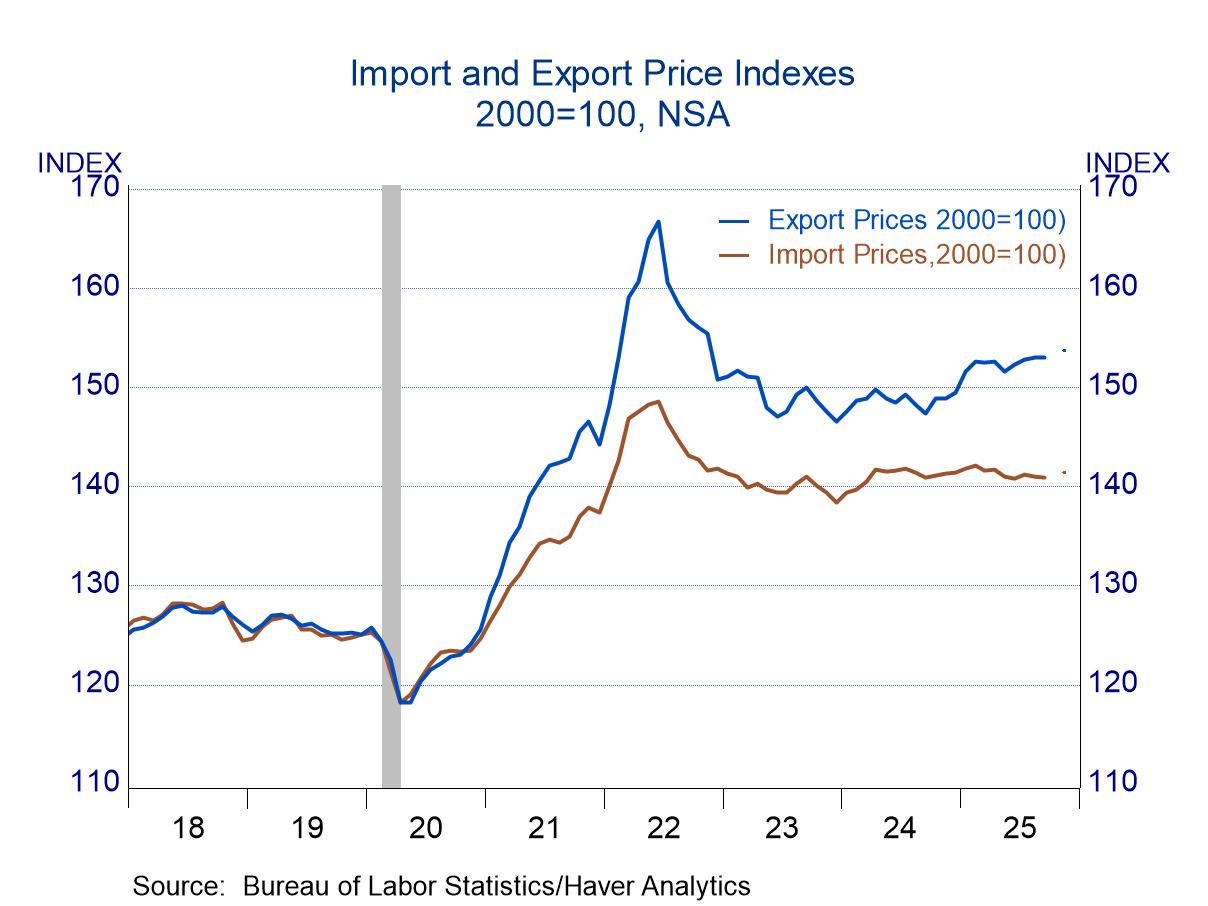 Global| Sep 28 2006
Global| Sep 28 2006Retail Trade Takes Summer Break in Sweden; Mail Order Buying Is Vigorous
Summary
Retail trade in Sweden was flat from month-to-month over this past summer, but Swedish consumers have shown some interesting underlying buying patterns. Total retail sales edged down 0.1% in August following a similar minuscule [...]
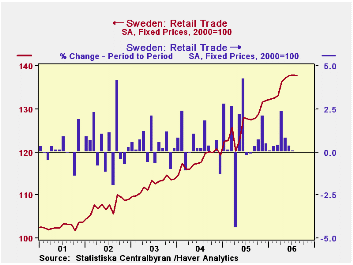
Retail trade in Sweden was flat from month-to-month over this past summer, but Swedish consumers have shown some interesting underlying buying patterns. Total retail sales edged down 0.1% in August following a similar minuscule increase in July. The index was 137.8, seasonally adjusted, in August on a 2000 base, with not seasonally adjusted results up 8.3% from a year ago.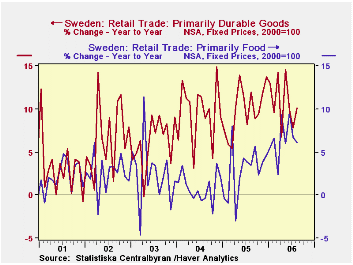
Conventional consumer necessities, food and clothing, show moderate growth, with food in August up 6.1% on the year-ago, but down 1.7% from July. Sales of those stores have grown at about a 3% annual rate since the middle of 2000. Apparel, released with a month's lag, fell in July by 0.8% after a 2.3% decline in June. Apparel sales have been erratic, with, for instance, these two downs following ups of 7.7% in April and 1.0% in May. All together, since last August, clothing store sales have risen 3.3% at an annual rate (compared with August, the same year-ago period used with all other items here).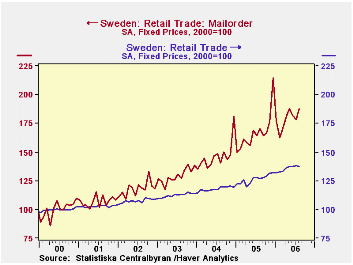
Durable good spending, by contrast, has been strong in Sweden. It can also take a seesaw pattern, but 12-month growth rates have fluctuated in a range around 10% since April 2005, indicating quite lively demand for these items.
The feature of these retail trade data that caught our eye this morning is the strength of "non-store" retailing, especially mail order. The total retail trade index for August is 137.8 on a base of 2000=100. The non-store sector stands at 184.2 and the mail-order segment of that is at 187.6. These represent six-year growth rates of about 10% from the 2000 base. As we all know, the same phenomenon has gripped US shoppers: total retail sales converted to a 2000 base would stand at roughly 140, while "electronic shopping and mail order houses" would be just below 160. So Swedes have gone even more vigorously into this mode of buying. Cold winters may be one reason: a quick calculation of implied seasonal factors shows that mail order purchases have a high seasonal in the winter and are sluggish in the spring, compared with their total retail sales, which have the opposite pattern of mid-winter sloth but a spring revival. Shopping from home is a definite plus when it's cold outside.
| Sweden: SA*, Fixed 2000 Prices |
Aug 2006 | July 2006 | June 2006 | Aug 2005 | 2005 | 2004 | 2003 |
|---|---|---|---|---|---|---|---|
| Total**, 2000= 100 | 137.8 | 137.9 | 137.8 | 127.5 | 126.4 | 118.0 | 112.4 |
| % Change | -0.1 | 0.1 | 0.4 | 8.3 | 6.9 | 5.5 | 4.4 |
| Primarily Food | -1.7 | 0.6 | 1.3 | 6.1 | 2.9 | 0.9 | 2.4 |
| Apparel | -- | -0.8 | -2.3 | 3.3*** | 6.8 | 7.6 | 3.1 |
| Primarily Durable Goods | 1.4 | -0.6 | -0.3 | 10.1 | 10.1 | 9.5 | 6.3 |
| Mail Order | 5.2 | -1.8 | -3.2 | 9.9 | 14.2 | 13.2 | 9.1 |
Carol Stone, CBE
AuthorMore in Author Profile »Carol Stone, CBE came to Haver Analytics in 2003 following more than 35 years as a financial market economist at major Wall Street financial institutions, most especially Merrill Lynch and Nomura Securities. She had broad experience in analysis and forecasting of flow-of-funds accounts, the federal budget and Federal Reserve operations. At Nomura Securities, among other duties, she developed various indicator forecasting tools and edited a daily global publication produced in London and New York for readers in Tokyo. At Haver Analytics, Carol was a member of the Research Department, aiding database managers with research and documentation efforts, as well as posting commentary on select economic reports. In addition, she conducted Ways-of-the-World, a blog on economic issues for an Episcopal-Church-affiliated website, The Geranium Farm. During her career, Carol served as an officer of the Money Marketeers and the Downtown Economists Club. She had a PhD from NYU's Stern School of Business. She lived in Brooklyn, New York, and had a weekend home on Long Island.


